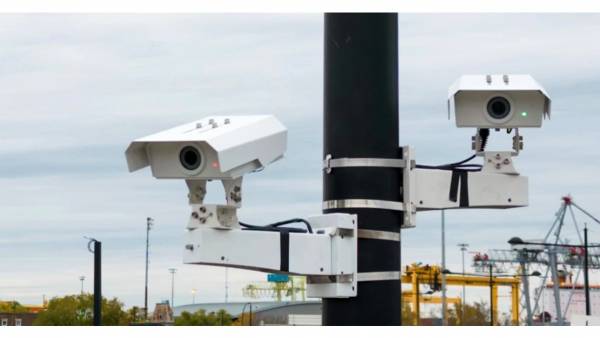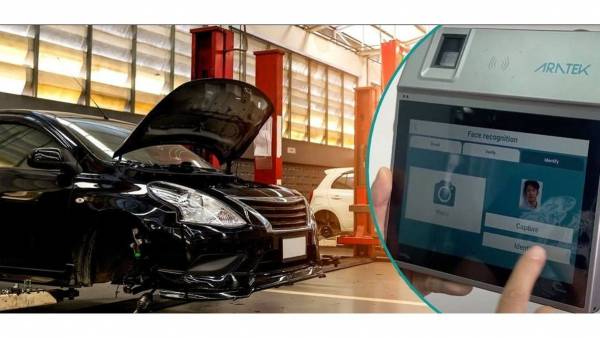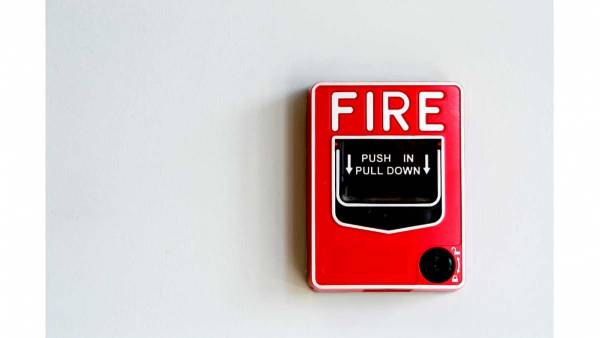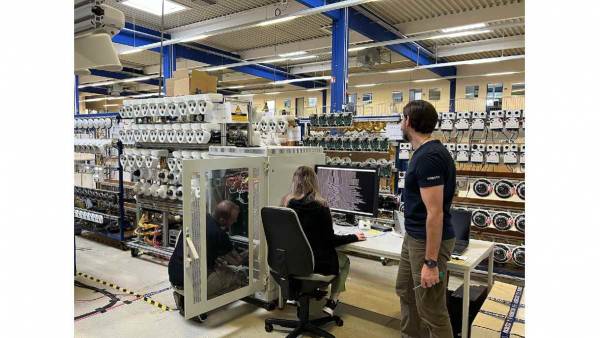By Germán Alexis Cortés
The answer is as simple, obvious and sincere as the word: YES.
In previous editions, I have referred to IP cameras, as very interesting elements, which we should not always use and that without being wonderful, provide an important service when the conditions of the data network are sufficient. Some people have asked me if I am against IP cameras, and my answer is a resounding NO. I love technology and I am aware that the future is IP, however my perception is that they should not always be used, in fact many analog cameras do much more than some IPs, for a much lower price.
However, entering the world of high resolution is something that IP cameras definitely do much better than analog cameras. It is here that the new technologies surpass with creses the characteristics of their predecessors, for the benefit of the end user and the credibility in the entire video surveillance system.
Definition
Megapixel cameras are named after him because they have more than a million pixels of resolution. That is, the NATIVE size of the image when expressed in horizontal pixels per vertical pixel is greater than one million image elements. Its CCD sensor or similar, I must therefore have at least the resolution of the video signal delivered by the camera. The size of the sensor element can go in the opposite direction to the trend seen, being larger in format (2/5", 1/2", 2/3" or 1"), because it is the only way to accommodate so many pixels.
To understand a little better, let's see an example of a traditional analog camera of 420 TVL, which when digitized we obtain a standard VGA resolution, where we natively obtain images of 640 by 480 pixels, or 307,200 pixels, that is, 0.3 Megapixel.
Many times I have insisted on the need to record at the native resolution at least, however today many people still record these units at CIF resolution, (320 x 240, that is, at 0.077 Megapixel).
Megapixel resolution cameras NATIVEly produce images 13, 20, 50 or 60 times larger than traditional ones at CIF resolution. This allows 60 times more detail in the image or 60 zooms in without losing quality or distorting the image.
That is, I can see and record the scenes with valuable information that I can use to fully determine the identity of a person, read the license plate of a vehicle or verify a criminal or suspicious act in a better way.
What are they for?
A high-resolution camera, working with a high-powered zoom lens is enough to be able to easily read the license plate of a vehicle at more than 600 meters or allow a face to occupy 40% of the image at the same distance to be able to identify the features of a criminal's face. Pretending to do this with a traditional camera is impossible.
In the market we find video cameras from 1 to 8-12 Mega pixel, manufactured for the world of security. However, in other applications such as cinema, there are higher resolution units. These are high-tech elements that have NOT been massified and that for now their cost is high, however we know that the future is heading in that direction.
But so much information is obvious that it takes up a lot of space on the hard drive and that therefore a much greater bandwidth is required to be able to transmit these images remotely. So having a system with high-resolution cameras involves changing the characteristics of other elements.
I have seen such absurd things, such as investing in megapixel cameras, to end up recording them in a toy NVR at CIF resolution.
I have also seen systems with 3 megapixel cameras, seen in real time on the traditional monitor of a PC with XVGA resolution (1280x1024 = 1.3Mp), therefore the true quality of the image will never be appreciated, because the resolution is lost when moving from one medium to another, with lower resolutions.
Resolution
To determine how much resolution I require, there is the concept of Pixels per meter (PPM). In this sense some manufacturers recommend, as a result of the experience of their own customers, that to identify a person, you need images with 400 PPM, to read a license plate of a car, you need 150 PPP, to recognize (that is, I already know her) a person 80 PPP, to measure occupation of people (count) you need 20 PPP, among others.
In the training courses, we learn that by calculating the focal length of the lens, and knowing the distance of the object I want to observe, as well as its vertical or horizontal size (Region of Interest – ROI), I can determine by a simple rule of three, what is the total resolution of the entire field of view of the scene (FOV).
That is why it is very important to know exactly in each scene, what I want to observe and at what level of detail I require it.
Let us remember, as my friend Walter says, that: "... high-resolution cameras, they are not magical, they are mathematics..."
Common sense tells us that we must be consistent with high-resolution systems in all their basic components: Cameras, Lenses, Wiring, video managers, VCR and Monitors, among others.
Cameras
Some manufacturers have not been able to adequately convey the concept of a high-resolution camera. I have seen sales brochures where they make people believe that with megapixel cameras they see more area (this only depends on the lens that is used), in others they make them believe that they will see all the objects in more detail and this is true, but only when making an electronic zoom and in case of doing it for an investigation, it is only true if they are recorded at native resolution.
Let's understand that the only thing I get with a megapixel camera, is an excellent resolution and therefore I have a lot of information that I must see, send and store, trying not to lose any pixels.
Some megapixel cameras (almost always the cheapest), have hardware limitations with the internal video processor and only manage to deliver a few frames per second (FPS), when the highest resolution is chosen. Take into account the application for which you are developing the system and check if the maximum speed is enough, otherwise it will be better to lower the resolution a little, to allow higher speed in the output data signal (video).
Many Megapixel cameras offer a large number of additional features, such as multi-streaming (to see different lower resolution video signals, originating in the same scene, with different speeds and resolutions). They use very efficient algorithms almost always based on H264. Almost all of them handle the day/night characteristic, have a very high sensitivity, see IR light, have an excellent dynamic range, work with detection of image changes over some areas and their power can be PoE. That is, they are state-of-the-art IP cameras with the typical characteristics that we see in ip cameras of normal resolution.
Spectacles
The lens plays a fundamental role, because it is through this optical object that the light passes through and brings us the information with the details of the scene. In the market there are lenses that are appropriate for high-resolution cameras and others that are not. Although the way to attach camera and lens is the same (C or CS), it does not mean that optically they are compatible.
We must make sure of the quality and purity of the lens, because many of them (especially the most economical ones) have manufacturing irregularities, which are not noticeable with a low-resolution camera, but which are seen as a big obstacle in high-resolution cameras. High-resolution, sharp and clear images are desired, I suggest you do not save on the lens, because it can be seriously affected. Ask your high-resolution camera factory for a list of possible manufacturers and references of suitable lenses to get the most out of your camera.
Expect in our next edition the continuation of this article in which we will talk about the other specifications of megapixel cameras such as the transmission medium, bandwidth, video grader, and other important elements that are immersed in the use of this technology.
If you want you can write to the author at the email [email protected]

























Leave your comment